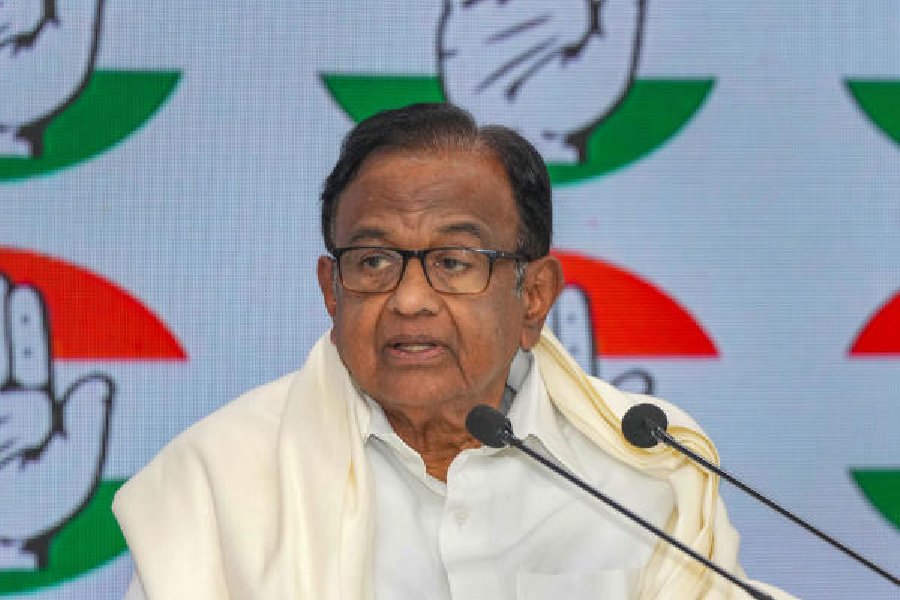Quarterly GDP growth has hit a six-year low, virtually all economic indicators are pointing downward and economists see no signs of a significant upturn soon. Yet Prime Minister Narendra Modi and his top lieutenants are still insisting to anyone who’ll listen at home and abroad that India’s experiencing a “temporary slowdown” and will be a $5-trillion economy by 2024.
It’s made commentators wonder whether the government’s in a state of denial or believes that by repeating their growth mantra often enough, it will happen.
Nothing in the flood of negative domestic data has made the government deviate from its $5-trillion “India rising” narrative as the country slips further down the list of the world’s fastest-growing economies (Vietnam clocked growth of 7.3 per cent in the last quarter while Bangladesh is growing at 8 per cent. China’s expanding at plus 6 per cent).
Soon after the weak second-quarter GDP numbers showing 4.5 per cent growth, home minister Amit Shah told top corporate leaders in Mumbai he had “full confidence that by 2024, we will achieve the target of $5 trillion.” Finance minister Nirmala Sitharaman also tweeted $5 trillion was still the goal. And normally low-profile P. K. Misra, the prime minister’s principal secretary, assured students at Orissa’s Sambalpur University their job prospects were bright because India will have breakneck growth and hit the $5-trillion mark by 2024.
So what kind of growth does India need to be a $5-trillion economy by 2024 when the next national election is due? The simple answer is just slightly short of double-digit. The economy, according to Niti Aayog CEO Amitabh Kant, needs to “grow (at) 8 per cent-plus year after year to become a $5-trillion economy,” nearly double from its current $2.9 trillion. The pre-budget Economic Survey also said to reach the magic $5-trillion, India needs to “sustain a real GDP growth rate of 8 per cent.” But that possibility looks to have been kicked into the long grass with the Reserve Bank of India on Thursday slashing its growth forecast for this financial year to 5 per cent from an earlier estimate of 6.1 per cent, citing weak domestic and internal demand.
Other economists, though, reckon growth would need to be at least in the 9-per-cent-plus range and some even say it would have to be double-digit to hit the 2024 target.
“Certainly, growth jogging along at 4 per cent to 6 per cent won’t do the job. The required rate of growth to achieve ($5 trillion by 2024) is in excess of 9 per cent per annum,” former Reserve Bank of India governor C. Rangarajan told a recent function.
Ernst & Young, the global professional services firm, has also calculated India must grow by 9 per cent annually to reach the $5-trillion target.
And how likely is India’s growth likely to accelerate to 8 per cent or 9 per cent annually to get to its $5-trillion target? The view ranges from “unlikely” to “out of the question.” “You’ve (already) lost two years” with weak growth, Rangarajan noted. (On Monday, investment house Goldman Sachs lowered its estimate for GDP growth for this fiscal year to 5.3 per cent). “Reaching $5 trillion (by 2024) is simply out of the question,” Rangarajan said.
Economists believe the government needs to get out of its denial phase and deal with the reality of the economic slowdown and the challenges facing it.
The second-quarter growth marked the slowest expansion in 26 months. Manufacturing shrank by 1 per cent after growing by 6.9 per cent in the year-ago period. For GDP to exceed even 8 per cent, manufacturing needs to grow by double-digits -- consistently. Investment, which is an indication of business confidence going forward, rose in the second quarter by just 1 per cent. Meanwhile, after perking up amid festive season offers, automaker sales fell 7.8 per cent in November from a year earlier. The economy is “passing through a declining growth momentum and there is no easy way out,” noted Sunil Sinha, principal economist at India Ratings and Research (known as Ind-Ra). “The government will have to do the heavy lifting to support growth,” he said.
But more government spending or tax breaks would mean a further hit to the fiscal deficit and the government’s in a tight spot. It's already passed its full-year fiscal deficit target seven months into the financial year. Tax revenues, meanwhile, are below-budget. If the government wants to try to spend its way out of the slowdown, it’s going to have to bust its fiscal-deficit target and this could cause a lot of trouble down the road – though many economists are now saying it must take that risk.
The government’s hoping the recent tax cut it gave corporations will boost investment. But many companies are earmarking the money for cleaning up their balance sheets so that won’t feed through to investment right away. A successful string of disinvestments could help the government’s fiscal numbers but that looks unlikely in the short term. Economists now are saying the fiscal fix that’s needed is to cut personal taxes, but if consumers are too worried about the economy, they may save any tax giveaways, not spend them.
Delhi School of Economics professor Ram Singh says what could help the economy reach $5 trillion would be a near doubling of exports to $1 trillion annually. But that’s a big ask as India’s export performance has been normally weak. (October’s export growth fell by 1.1 per cent, contracting for a third month). The commerce ministry’s high-level advisory group is looking at ways to boost exports and one suggestion is India sign free-trade pacts. But we’ve just backed out from joining RCEP (Regional Comprehensive Economic Partnership), the Asian free-trade zone taking shape.
Even as the economic data picture darkens, Sitharaman is still taking the $5-trillion message to foreign shores. Speaking at the Columbia School of International and Public Affairs, she said India would reach its $5-trillion target. Getting there would be challenging but “realisable” thanks to a “single-minded dedication to reforms,” she said, even though it's generally acknowledged the government's more or less abandoned reforms as unpopular with voters and decided to be populist. Modi has taken the $5-trillion message to the hustings too, warning against “negativity,” on the subject. “I assure the youth the coming years are full of possibilities,” he told a Pune rally.
Forecasting whether India can hit the $5-trillion-mark hinges, of course, on a host of factors. Exchange rates play a key role. Slowing economic performance could drive the rupee lower against the dollar. So would further interest rate cuts to revive consumer demand. If the rupee weakens against the dollar, reaching $5 trillion becomes that much more of an elusive goal. In any event, if growth continues to limp along at 5 per cent, the $5-trillion target will be pushed out beyond 2024 into the following decade.
So why is the government so obsessed with and repeating the mantra of being a $5-trillion economy by 2024 even though the target looks to be increasingly out of reach? One observer says that Modi has always been obsessed with doubling economic growth figures. In the past, he’s talked of doubling farmers’ incomes by 2022-23. That target is also far from being reached.










